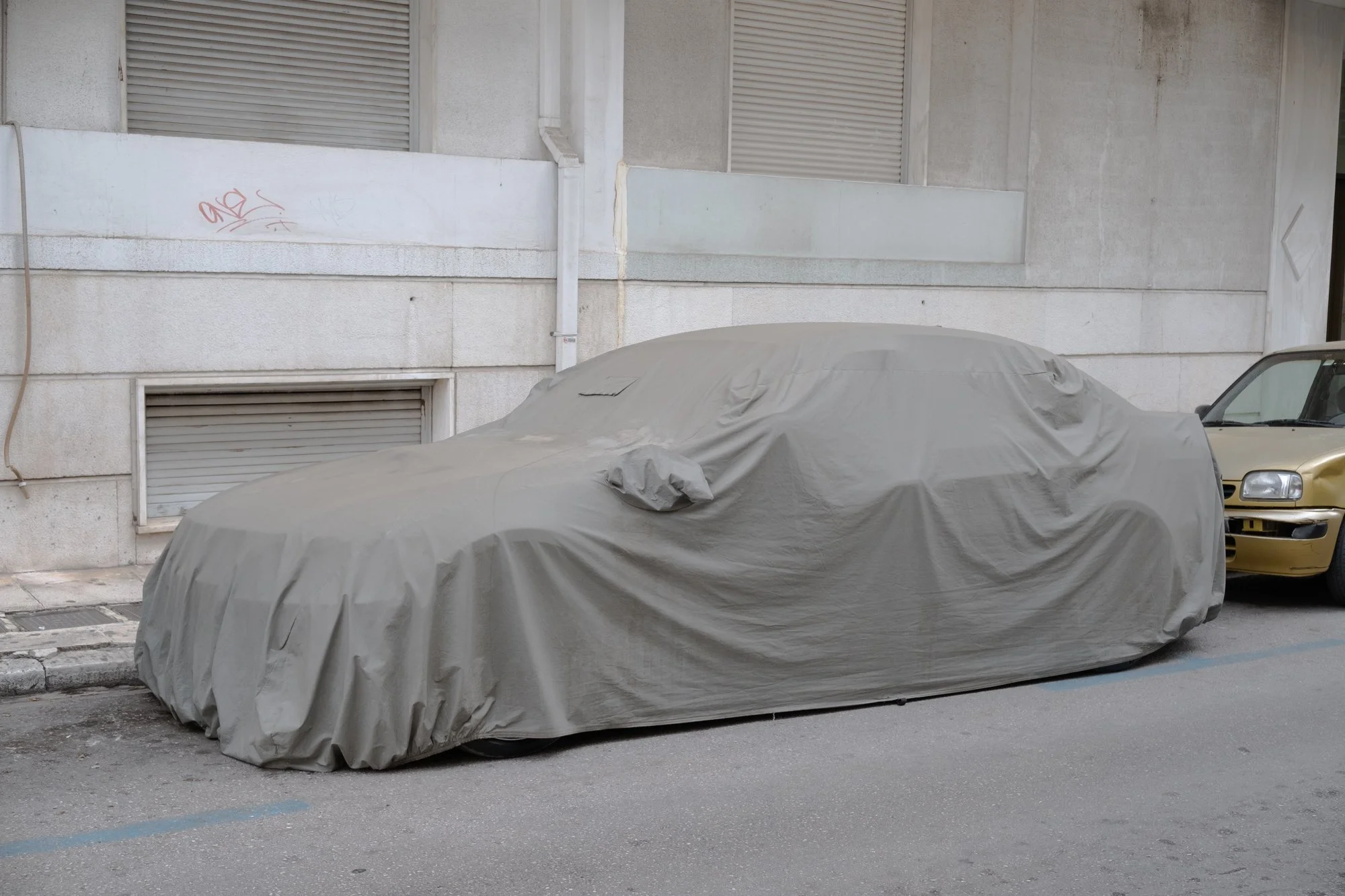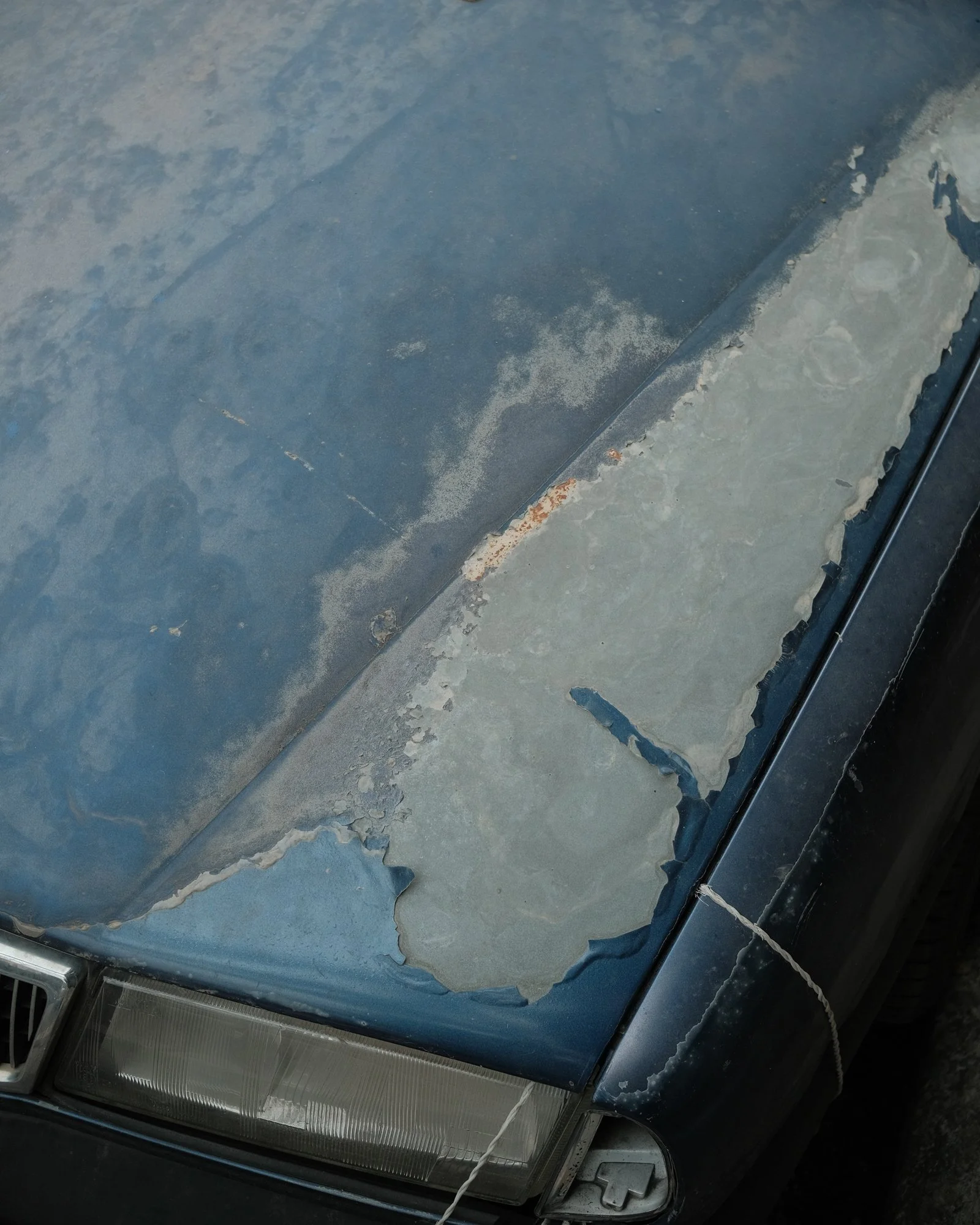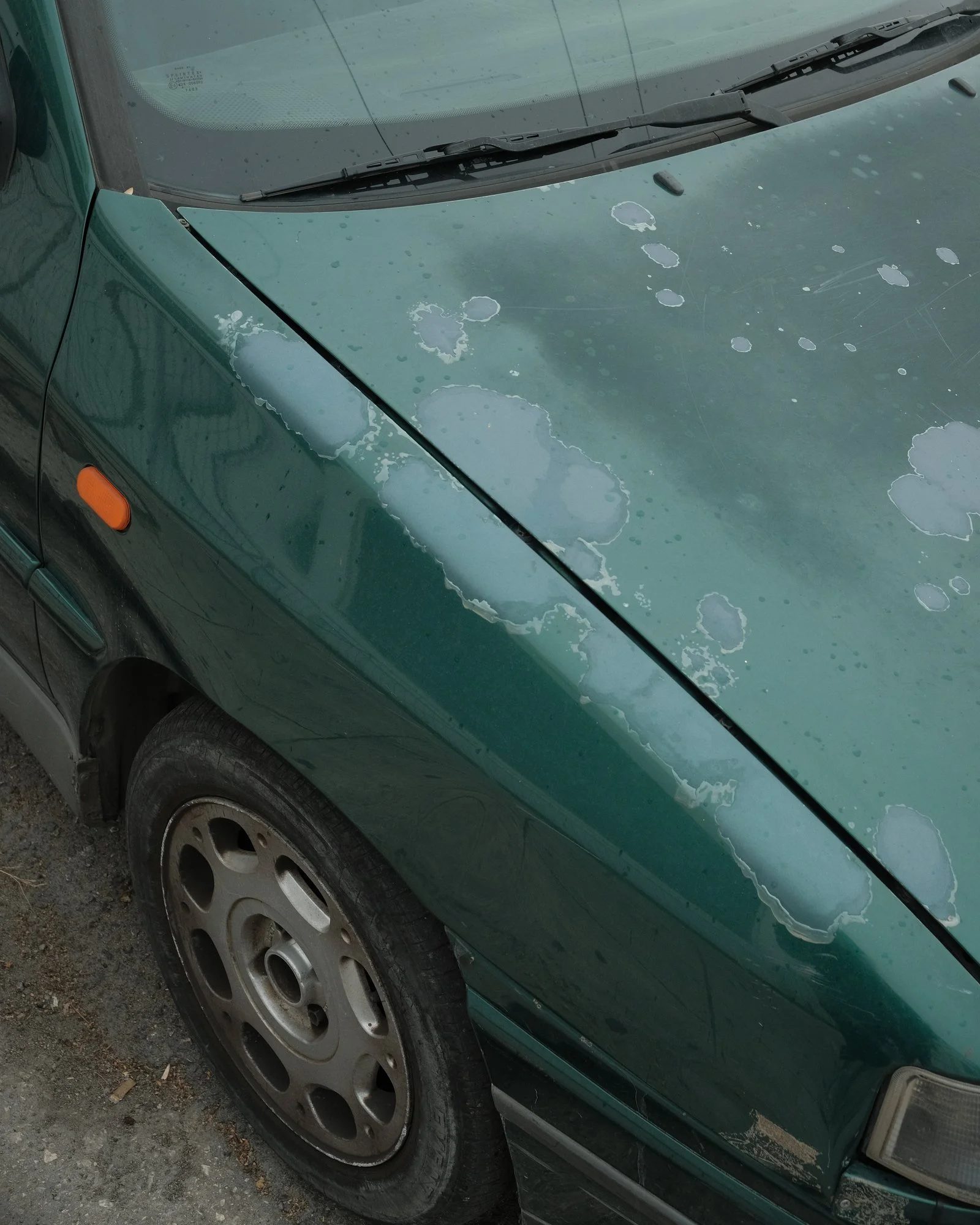
MATHIS BAUER
How do you source principles of erosion in your work — its causes, its forms, and its relationship to climate and time?
For me, a fundamental aspect of photography is collecting. Photography is, in essence, about the directed gaze — about conveying how one looks at the world. To move within a new environment always means to surrender to a new visual context, to reexamine one’s own way of seeing, and to perceive more clearly the things that speak back to you. Visible erosion marks, for me, the point where the human-made and the natural world meet under the influence of time. In my photographic process, I’m often drawn to these visual traces — to what could be described as a form of tracking or tracing, a kind of visual trail-reading. Athens’ visual landscape allows for things to emerge that are less apparent in my everyday surroundings. That’s precisely why they become so striking. My gaze has always been drawn to things that carry a certain sense of impermanence — objects, situations, or moods that seem to demand being photographed. Photography feels like the perfect medium for this pursuit, precisely because it is so inherently tied to time itself.
Your work often explores the suburbs and peripheries — how do these geographies shape your research process?
In this context, the research process was defined by walking, observing, and truly discovering — a practice that became a constant companion during my time in Athens. Inevitably, one moves from the center toward the periphery, in a motion that feels almost like a spiral or a slow vertigo pulling outward. The periphery offers more space — for new discoveries, for another kind of looking. The city center, particularly in Athens, is often saturated with clichés and preconceived images. The outskirts, in contrast, recontextualize perception; they correct it in subtle ways. Paradoxically, I often feel that in these peripheral zones, I am closer to something truthful.
You’ve spoken about the hidden beauty and impermanence of materials. What draws you to this philosophy of transience?
Thinking about this, I realize that I am interested in moments where things do not reveal how they are meant to be, but rather how they exist — in their unguarded authenticity within the environment. A car’s paint is a form of protection, an idealization — a kind of Platonic archetype. Yet the world is defined by impermanence; it is, in a sense, structured by decay.
For me, these erosions serve as metaphors for the human condition — our constant oscillation between the ideal and the real, between conception and dissolution. The act of covering or concealing cars also speaks to this dynamic. As a photographer, I participate in this process: attempting to hold on, to re-idealize, to collect, to categorize.
Could you describe your idea of building a typology of automobile skin erosions, and the covering of such artifacts — first in Bulgaria, and how it developed further in Greece?
Photography, as a practice, always implies collecting — at least in the way I approach it. Through sustained engagement, forms and concepts begin to surface almost autonomously, reflecting themes that may have been present for years without conscious awareness.
This series, in that sense, was never premeditated; it revealed itself only when I was already immersed in it. I am drawn to structures and patina because they function almost as a medium of their own — telling the history of a surface in ways that words often fail to capture. The first traces of this kind I noticed in Bulgaria; in Athens, the thread simply continued, unfolding further.
How do you interpret the tension between visibility and invisibility — especially how an object transforms once it is hidden in context to the enveloping city?
I am drawn to this question because, for me, this tension is intrinsic to the medium of photography. To place something within a frame means, inevitably, to exclude everything else. In photographing, one conceals far more than one reveals; every image points to what lies beyond its borders. In the context of this work, the relationship between visible and invisible becomes particularly complex. The act of covering functions both as protection and possession: the object is safeguarded precisely by being withdrawn from the outside world, its form perceivable only as an outline or idea. The folds of a cover both hide and reveal — they offer a new perspective on the object, expressing another quality of visibility.
This concealment transforms the object’s presence in the city, turning it into something ritualistic. The parallels to Greek sculpture and relief are evident — in their folds, their muted tones, their tactile surfaces. The car, as an object, carries within it qualities of architecture and space; it demands protection, and in doing so, it asserts ownership.
In your photographs, the city foregrounds the object in stasis. How do you see transitions between order and chaos expressed in building façades?
As simple as it may sound, observing cars means inhabiting the street — the space where these vehicles claim their presence with an almost unquestioned authority. Athens, in many parts, is a dense city, and the typical construction of the polykatoikía provides a flat, quiet backdrop that presents the cars in my photographs, turning the buildings into silent co-actors within the series. Even though the focus is not on these backgrounds, their surfaces tell stories of the city — of the neighborhoods they belong to — and they become an involuntary part of the typology. Athens is defined by simultaneity: of time, of form, of decay and renewal — a quality that finds its expression in the façades themselves.
How does the perception of the subject differ from the reality of the photograph — what happens when you revisit images after the moment of seeing?
Photographer Garry Winogrand once remarked, “I photograph to see what the world looks like photographed.” While this may sound simple, I find myself increasingly in agreement. To photograph is to quote the world, yet the act itself transforms it — giving the photographed subject an autonomy that grows more visible over time.
The worst thing one can do is to look at photographs too quickly. While acknowledging this discrepancy is important, I prefer to leave time between photographing and returning to the image, because photography is not the photographed. Still, the act of seeing remains the essential foundation of my process. When working in series, this becomes evident: the visible world becomes approachable, collectable, sortable, categorizable. Relationships emerge that are only possible through the photograph’s capacity to frame and transform. To photograph, ultimately, is to collect — to practice an attentive form of gathering.





